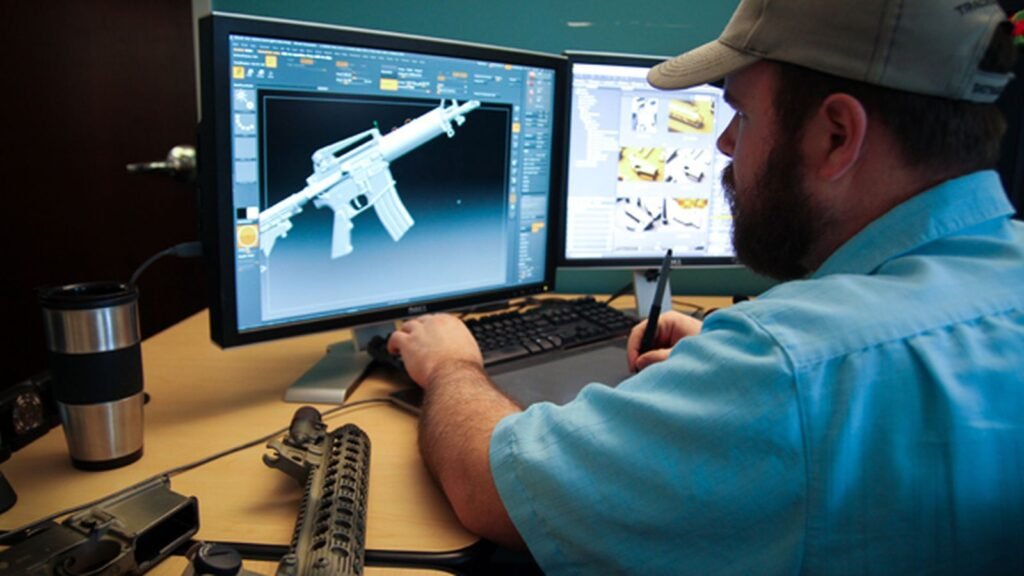In the world of 3D games, great animation, and appealing gameplay are important, but one factor that seldom gets as much attention as those two is sound design. Sound artists are a crucial part of the process of creating immersive and emotionally touching experiences. Mastering sound design is crucial for every 3D game development company, right after working out stunning graphics. That is the difference between a hollow game and one that whisks the players into a fully realized, vibrant world. Now let’s step aside and see with what sound design enhances the experience of 3D games and why it is such an integral part of 3D game development services.
1. Building Atmosphere and Immersion
One of the things that sets apart a great 3D game from a good one is that instead of merely ‘entertaining’ the player, it shoos them into a different reality altogether. Sound design is one of the most effective ways to evoke such an atmosphere. From the ambient sounds in a forest down to the echoing of footsteps within an empty hall, sound can make a virtual world alive. Players are not just moving around in some silent landscape; they hear the rustling of wind through leaves, the crackling of fire heard from afar, or machinery humming. Each of these sound cues helps to build the player’s sense of place and can even help with gameplay by softly guiding the player through an environment.
For any 3D game development company, the art of creating a believable atmosphere perfectly balances realistic sound effects with creative design. A delicate balance between soft ambient sounds and more prominent cues, such as character voices or sounds of interaction, keeps the surroundings natural and not too boring or repetitive.
2. Building Emotional Resonance
Sound is incredibly potent as it works its way into making the players feel one or another when playing. In a suspenseful moment, tense music with eerie sound effects heightens anxiety. During victorious moments, uplifting or powerful scores make one feel invincible. This is no accident but deliberate and cultivated planning and execution by 3D game development services.
A well-designed soundtrack, changing along the emotional highs and lows of gameplay, can turn a simple gameplay sequence into a memorable moment. The composition, timing, and sound effects serve together to heighten the players’ emotions, making them more into the game. A good 3D game development company will use these elements in a manner to evoke certain feelings that deepen the player’s connection to the story and characters.
3. Delivery of Essential Feedback and Cues
Sound design also plays a very important role in the representation of gameplay feedback. It acts as a guide for players by providing crucial cues on what is taking place within the game. For example, in action-packed scenes, the sound of gunfire, footsteps, or an enemy approaching helps players react quickly to changing situations. These audio cues are especially important in 3D games, where the amount of complexity given inside an environment often makes visual feedback insufficient.
Further, sound can denote the success or failure of certain players’ actions. While performing various actions, such as opening doors, picking up powers, hitting targets, and so on, players hear immediate feedback through sound effects. This feedback loop is important in maintaining satisfaction for the player; it gives players a more attached and in-control feeling over their experience while playing. 3D game development services that optimize clear audio create a smoother and more intuitive gameplay experience.
4. Mechanics of Game Reinforcement and Immersion
Good sound design extends beyond the background music and simple sound effects to integrate with the mechanics of the game. For example, in horror games, there might be sections of the game where developers apply complete silence or just minimal sound, then inject an earsplittingly loud sound to scare players. In racing games, the revving of engines, screeching of tires, and sounds of passing cars will make the player feel like he’s sitting in the driver’s seat.
Sound design affirms the mechanics and gives them the feel of actual actions and considered decisions. Realistic sound feedback, such as increased breathing of a character when tired or footsteps on the ground making noise differently according to the surroundings, adds to the experience. A 3D game development company tries to create such means of gameplay mechanics with sound effect interaction to further increase the indulgence and attachment of a player towards the game.
5. Creation of Spatial Awareness in 3D Environments
Spatial audio is the only method whereby a gamer may get a correct idea of his position in a 3D game. Spatial sound, or 3D audio, allows players to hear sounds as if they’re coming from specific directions. For example, the sound of a waterfall might grow louder as the player moves closer, or an enemy’s footsteps may get fainter as they retreat.
It adequately allows players to navigate the game world more realistically since they will be able to track objects, notice allies or foes, and feel the depth and distance far better. Most of the modern 3D game development services use some pretty sleek audio solutions or binaural to enhance the spatial awareness of the players by adding realism to it.
6. Audio Enhancement of Storytelling
Where there is a game, especially a memorable one, there is usually storytelling involved. Usually, sound design amplifies that much further. Dialogue, the sounds that describe and build ambient atmosphere, and music all contribute to crafting the mood and setting of the story. Whether it is an epic-fantasy-based journey or a survival game set within a dystopian world, the audio information like character voices, background noise, and sounds of environments name a few-populate your story.
A powerful narrative is not only something to be viewed but also heard. A 3D game development company can create more interactivity and intrigue regarding the story by developing a certain kind of sound for every place or situation. Sometimes, the sound gives subtle clues to the storyline milling of voices from afar can suggest a plot twist, while the strange noise could mean that there is something hidden.
7. Inclusive via Sound Design
As gaming gets inclusive, 3D game development services make sure to develop with accessibility in mind, especially for the visually impaired. Appropriate sound cues and spatial audio can make a game more accessible and help players navigate and interact with the in-game environment. Audio can indicate or augment visual indicators of events that are important to the gameplay, allowing all players to enjoy it.
This allows the gaming company to include more users and diversify its customer base when the sound design includes accessibility features, such as recognition of different sound cues for different actions and different characters.
Conclusion
In the competitive world of 3D gaming, sound design is no longer an afterthought; it’s a core element in game development. A 3D game development company specializing in sound design can take a gaming experience from above average to fantastic, building worlds where players feel part of the action. As the realm of 3D game development is still growing, the expectations are that sound design in the future will continue to become much more important and change how players navigate virtual worlds. Whether it’s building atmosphere, enhancing storytelling, or aiding accessibility, sound is the magic ingredient for making 3D games come alive.


